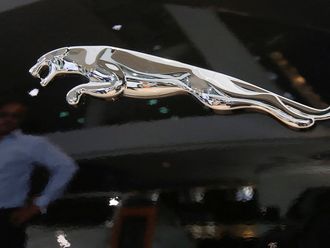In a video that recently went viral, Google CEO Sundar Pichai demonstrated the near-human capabilities of Google’s virtual assistant, one that could interact with a customer in real time and help arrange a hairdressing appointment. This highlights the power of technology and AI to make a meaningful difference in our lives.
But can these also be deployed by brands to build more meaningful relationships with consumers?
Over the last few years, mobile apps have developed into a key medium for brands to connect with consumers — gaming apps, apps for music and video downloads, and in-app advertising opened up ways for brands. However, with convergence of various technologies — virtual reality, augmented reality, facial recognition, gaming and AI-driven virtual assistants — brands have more means to build deeper and more lasting connections with consumers.
Some examples of how convergence of technology is helping brands create lasting impressions:
* Creating more personalised experiences
Millennials are driven by experiences and brands that can deliver unique ones are able to establish stronger connect. A notable example of this is the Ghaneely app by Orange Egypt, which allowed users to lay over their own choice of music over an ad in the form of a dance video — the beauty is that the dance moves change in accordance to the genre of music played.
So, if the music is changed from traditional Egyptian to English pop, the dance moves would change automatically. Allowing consumers to create their own personalised experience, that too in the form of dance and music, was an innovative way for Orange to convey the message “Whatever you need, we have it here”.
* Building stronger brand connect via immersive experiences
With mobile phones becoming more augmented reality compatible, brands can bring more storytelling to life. One example is a Starbucks outlet in Shanghai that has hotspots where customers can learn about the coffee brewing and production process via AR. In another case, Nike partnered with the Turkish national football team to take TV viewers into the dressing room at half-time via a mobile log in. And they could see and hear the team discussing strategies, the captain giving the team a pep talk, all in real-time.
These kinds of immersive experiences help build strong connect with brand assets.
* Improving brand salience at moments of truth
Estee Lauder and Google are piloting providing skincare advice to women via Google Assistant. Through a chat based exchange, Google Assistant can offer skincare tips to women and also subtly suggest Estee Lauder products.
While there could be privacy concerns around using voice assistant innovation in this manner — and as such, this needs to be handled with care — but it should be possible to deploy voice assistants to deliver brand purchase suggestions at key decision-making moments.
* Helping consumers optimise their time and/ or spend
With e-commerce growing in popularity, there are a lot of options for search optimisation and aggregation, such as Trivago for travel and Policy Bazaar for insurance products. An emerging innovation is image search, where consumers can upload images and use them to search for similar products.
A typical retail app like Screenshop allows users to take screenshots from any website or app, and use that as a basis for search. Brands would need to ensure that they are working on improving their image search capabilities in order to serve consumers more efficiently.
* Offering customised services
It is now possible to go beyond “market segmentation” to “segments of one”, that is, target individuals with specific offers. Facebook is likely to roll out facial-recognition technology, via store cams, that will provide sales staff with information from customer’s social media profiles (only with their consent). This would allow the personal care for each customer that is typically limited to high-net-worth customers only.
Emerging technologies will enable brands to be more salient in their target consumers’ mind and develop more meaningful relationships. There are, of course, some ethical challenges involved in use of technology, but when used responsibly, these technologies will open many more channels for brands to connect with consumers.
Gagan Bhalla is director at Kantar Middle East, North Africa and Pakistan.












